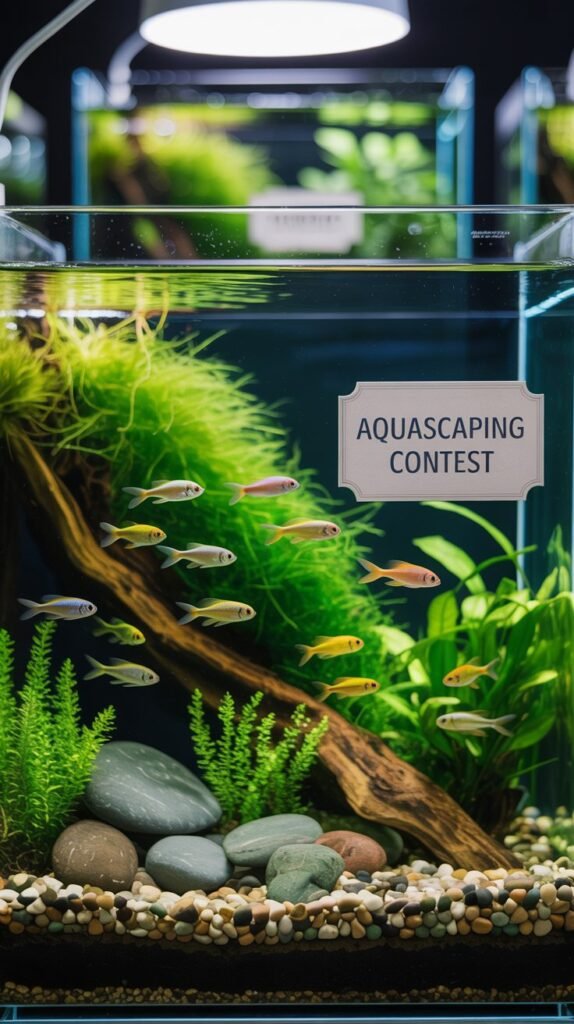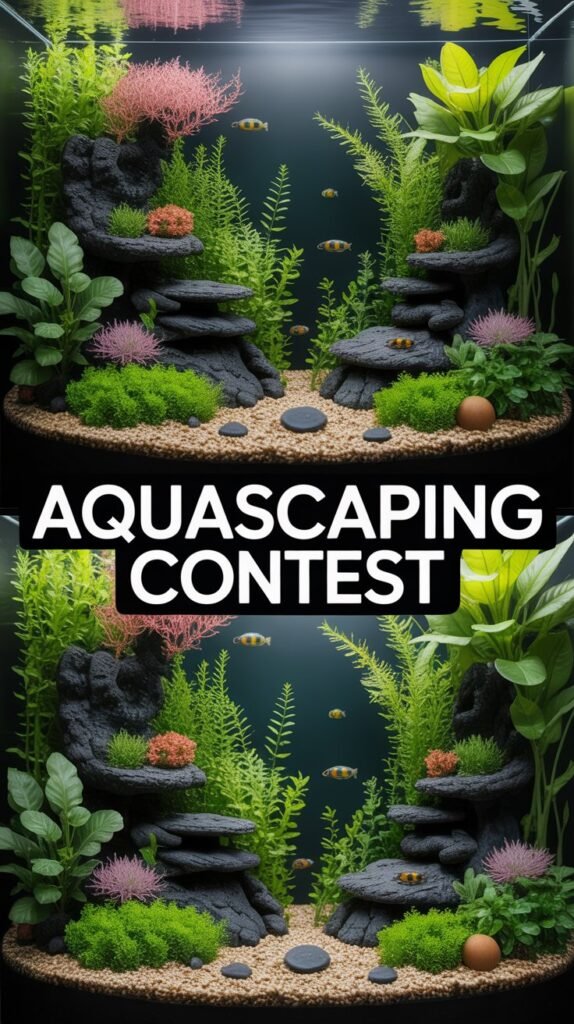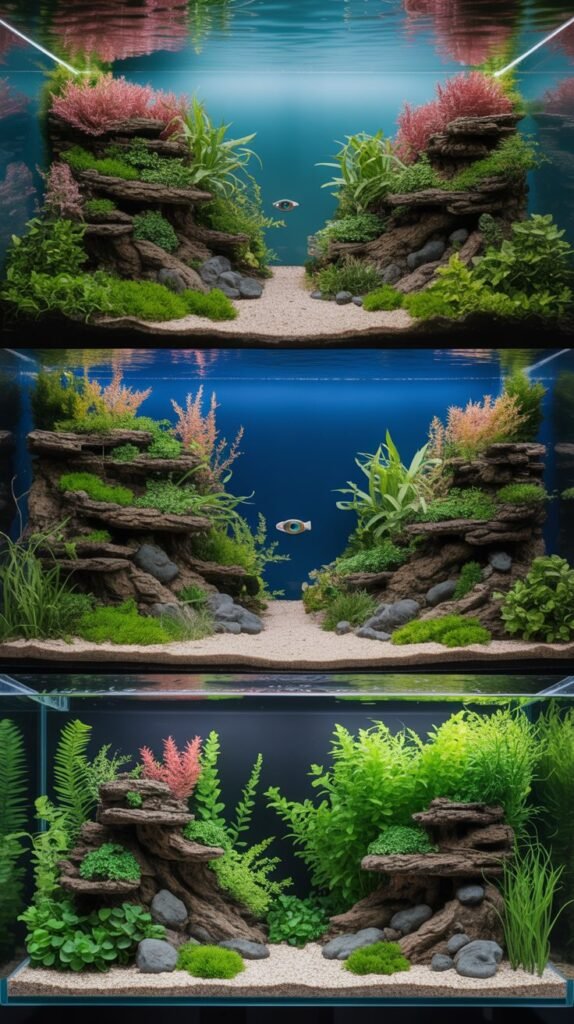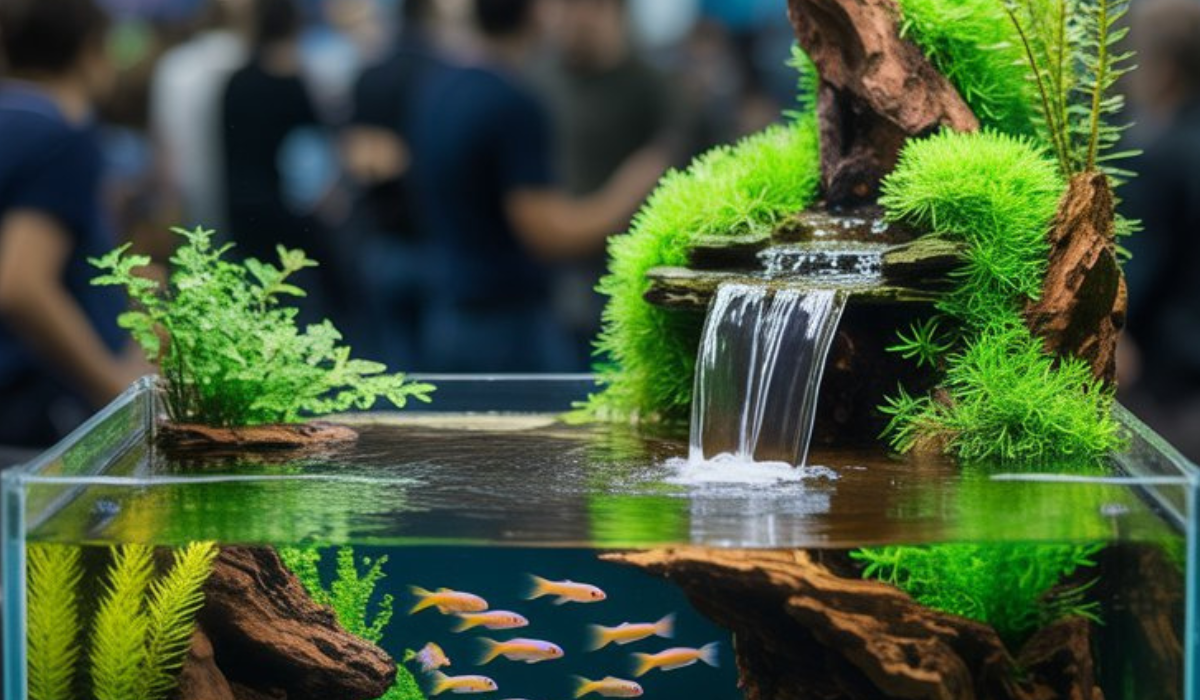Aquascaping is more than just decorating an aquarium—it’s an art form that combines creativity, biology, and design. Every year, thousands of aquascaping enthusiasts from around the globe showcase their passion by participating in aquascaping contests, where they transform glass tanks into breathtaking underwater landscapes.
An aquascaping contest is a competition where participants create and submit aquascapes to be judged on aesthetics, layout, balance, plant health, creativity, and natural appearance. Whether you’re a beginner or a seasoned aquascaper, these contests are an excellent way to challenge yourself, gain recognition, and connect with the vibrant aquascaping community.
In this comprehensive guide, we’ll explore everything you need to know about aquascaping contests—what they are, how to enter, how to win, and what makes a world-class aquascape stand out.
What Is an Aquascaping Contest?
An aquascaping contest is a competition where hobbyists and professionals design and showcase planted aquariums that resemble natural underwater environments. These contests are judged based on criteria like composition, plant health, fish selection, use of hardscape materials, and artistic impression.
The goal is to create a harmonious underwater world that evokes the beauty of nature while maintaining ecological balance.
Famous global contests such as the International Aquatic Plants Layout Contest (IAPLC) and the Aquatic Gardeners Association (AGA) Contest attract thousands of entries every year from countries like Japan, Brazil, Germany, and Indonesia. These competitions have set the gold standard for aquascaping excellence.
Why Participate in an Aquascaping Contest?

1. Showcase Your Creativity
Contests offer an opportunity to express your artistic talent. Aquascaping combines design, color theory, and biology—giving you a creative outlet to build something truly unique.
2. Gain Recognition
Winning or even participating in major contests can bring global attention to your work. Many professional aquascapers began their careers by participating in competitions and gaining exposure.
3. Learn and Improve
The feedback from judges and the opportunity to compare your work with other aquascapers help refine your skills and expand your knowledge.
4. Join a Global Community
Aquascaping contests connect you with enthusiasts, designers, and aquarium experts worldwide. These relationships often lead to collaborations, friendships, and professional opportunities.
5. Win Prizes and Sponsorships
Many contests offer attractive prizes like cash, equipment, and sponsorships from major aquarium brands. Winning entries are often featured in magazines, websites, and exhibitions.
Types of Aquascaping Contests
Not all aquascaping contests are the same. They vary in size, rules, and judging criteria. Here are the main types:
1. International Aquascaping Contests
These global contests are the most prestigious and competitive. The IAPLC (by ADA) and the AGA International Aquascaping Contest are among the most renowned.
2. Regional and National Contests
Countries like Japan, Germany, Indonesia, and the Philippines host their own national aquascaping events, allowing local hobbyists to showcase their skills before stepping onto the international stage.
3. Online Aquascaping Challenges
Social media platforms like Instagram, Facebook, and YouTube now host online aquascaping contests where participants submit photos or videos of their tanks. These are ideal for beginners and those who can’t attend in-person events.
4. Live Aquascaping Competitions
These exciting events are held at aquarium expos or conventions, where participants design an aquascape within a limited time, often in front of an audience. The EAPLC (European Aquascaping Championship) is a great example.
How to Enter an Aquascaping Contest

Participating in an aquascaping contest requires careful preparation. Here’s how you can get started:
1. Choose the Right Contest
Research and select a contest that matches your skill level and interests. Beginners can start with smaller or online contests before moving to international events.
2. Understand the Rules
Every contest has specific guidelines—tank size, photo submission format, water parameters, and even plant species restrictions. Read them carefully to avoid disqualification.
3. Plan Your Aquascape Design
Create a detailed sketch or 3D visualization of your layout before starting. Think about the theme—Nature style, Iwagumi, Dutch style, Jungle, or Biotope.
4. Prepare the Tank
Select quality materials—substrate, hardscape, and plants. Ensure the aquarium has proper lighting, CO₂ injection, and filtration for optimal plant health.
5. Maintain and Fine-Tune
Give your aquascape at least 2–3 months to mature. Regular trimming, water changes, and algae control are essential for a clean, balanced look.
6. Capture the Perfect Photo
Presentation is everything! Use a DSLR or high-quality camera, proper lighting, and clean glass surfaces. Most contests judge entries based on submitted photographs, so image clarity matters.
7. Submit Your Entry
Follow submission instructions carefully, including image size, format, and entry forms. Many contests have online submission portals.
Popular Aquascaping Contests Around the World
1. International Aquatic Plants Layout Contest (IAPLC)
Organized by Aqua Design Amano (ADA), the IAPLC is the most prestigious aquascaping contest in the world. Thousands of participants from over 70 countries compete each year, with rankings based on creativity, layout balance, and natural beauty.
2. Aquatic Gardeners Association (AGA) Contest
Founded in 2000, the AGA contest allows hobbyists of all levels to showcase their designs. It includes multiple categories—biotope, Dutch, nature, and paludarium layouts.
3. European Aquascaping Championship (EAC)
This live competition brings together Europe’s best aquascapers. Contestants create aquascapes within hours in front of a live audience—testing both skill and speed.
4. The Great Indian Aquascaping Contest (GIAC)
Asia is home to many talented aquascapers, and GIAC highlights India’s growing aquascaping community. The contest encourages creativity and sustainable aquarium practices.
5. AGA Local and Online Contests
Apart from its main event, AGA and other regional organizations host smaller online contests that allow participants to gain experience without traveling.
Aquascaping Styles Used in Contests
Understanding different styles is key to creating a compelling aquascape for contests.
1. Nature Aquarium Style
Inspired by Takashi Amano, this style focuses on mimicking natural landscapes like mountains, forests, and river valleys. It emphasizes balance and emotional impact.
2. Iwagumi Style
This minimalist Japanese style uses stones as the main feature. It emphasizes simplicity, proportion, and harmony—challenging even for expert aquascapers.
3. Dutch Style
Originating from the Netherlands, Dutch aquascaping is like underwater gardening. It focuses on organized plant arrangement, color contrast, and layers without heavy use of hardscape.
4. Jungle Style
This wild and untamed style imitates tropical forests. It emphasizes lush plant growth and natural chaos while maintaining ecological balance.
5. Biotope Style
A biotope recreates a specific natural habitat, including the same water parameters, plants, and fish species found in that ecosystem. It’s both educational and visually stunning.
Judging Criteria in Aquascaping Contests
Although each contest has its own rules, most follow a similar judging framework. Understanding these can help you craft a winning layout.
1. Composition and Layout
Judges assess how well elements are arranged. Symmetry, depth, balance, and focal points all matter.
2. Creativity and Originality
Unique layouts that break conventions or introduce fresh ideas often score higher.
3. Plant Health and Growth
Healthy, vibrant, and algae-free plants demonstrate skill and care.
4. Harmony and Naturalness
A successful aquascape feels natural and balanced, with smooth transitions between foreground, midground, and background.
5. Technical Execution
Clean water, well-maintained glass, lighting balance, and overall aquarium hygiene play a major role.
6. Photography and Presentation
Since most contests are judged via photographs, clear, well-lit, and properly framed images are crucial.
Tips to Win an Aquascaping Contest

- Start Early: Begin preparing months in advance to allow your aquascape to mature naturally.
- Plan the Layout: Sketch ideas before setting up your tank to ensure proportion and harmony.
- Focus on Details: Trim plants regularly, clean glass, and manage algae for a pristine appearance.
- Use the Golden Ratio: Follow visual design principles like the golden ratio or rule of thirds.
- Study Past Winners: Analyze previous winning layouts to understand current trends and standards.
- Be Unique: Judges appreciate creativity and originality—avoid copying others.
- Take Professional Photos: Lighting, angle, and camera settings can dramatically enhance presentation.
- Seek Feedback: Join aquascaping communities and get constructive criticism before submitting.
- Keep It Natural: Avoid overloading the tank; balance is more important than complexity.
- Be Consistent: Ensure that all parts of the aquascape align with your chosen theme or biotope.
Common Mistakes to Avoid
- Overcrowding plants or hardscape elements
- Using unhealthy or mismatched plants
- Poor lighting or visible equipment
- Rushing the setup without allowing it to mature
- Submitting low-quality or poorly lit photos
- Ignoring contest rules or submission formats
Avoiding these pitfalls ensures your entry stands out for all the right reasons.
Benefits of Joining an Aquascaping Contest
Personal Growth
Competing challenges your creativity and problem-solving abilities.
Skill Development
You’ll learn about plant species, lighting, filtration, and water chemistry in greater depth.
Networking Opportunities
You’ll connect with industry professionals, hobbyists, and sponsors who share your passion.
Portfolio Building
Winning or participating strengthens your resume if you plan to work in aquarium design or aquascaping services.
Community Recognition
Being part of global contests adds credibility and exposure to your work, potentially leading to collaborations or sponsorships.
How to Get Inspired for Your Next Aquascape
- Study natural landscapes—mountains, forests, riverbeds.
- Browse winning layouts from past contests.
- Follow top aquascapers on Instagram or YouTube.
- Visit local aquarium stores or botanical gardens.
- Experiment with lighting and color contrasts.
- Watch aquascaping setup videos for design inspiration.
Remember, the best aquascapes evoke emotion and tell a story through visual flow and natural beauty.
The Future of Aquascaping Contests
As technology and awareness evolve, aquascaping contests are becoming more accessible and inclusive. Virtual contests, live streaming, and online judging have made participation easier for aquascapers worldwide. The rise of sustainable aquascaping—using eco-friendly materials and locally sourced plants—also highlights a shift toward environmental consciousness in the hobby.
With growing social media influence, even small-scale aquascapers can gain international recognition. The future promises more collaboration, innovation, and artistic diversity within the aquascaping world.
Conclusion
An aquascaping contest is more than just a competition—it’s a celebration of creativity, discipline, and love for aquatic life. Whether you’re entering for fun or aiming for global recognition, participating in these contests can transform your aquarium hobby into a true art form.
By understanding contest rules, refining your technique, and presenting your aquascape professionally, you can elevate your work and inspire others. The journey from planting the first stem to submitting your final photograph is a rewarding experience that enhances both your skills and your connection to nature.
So, start planning your next layout, polish your photography, and take the leap—your aquascape might be the next masterpiece admired around the world.
FAQs About Aquascaping Contests
1. What is the main goal of an aquascaping contest?
The goal is to design a beautiful, natural-looking aquarium that balances artistic creativity and ecological health.
2. Who can participate in aquascaping contests?
Anyone—from beginners to professionals—can enter, depending on the contest’s level and requirements.
3. How are aquascapes judged?
Judges evaluate layout, composition, plant health, creativity, and overall harmony, often using a scoring system.
4. What are the most famous aquascaping contests?
The International Aquatic Plants Layout Contest (IAPLC) and the Aquatic Gardeners Association (AGA) Contest are among the most prestigious.
5. Do I need a large tank to enter?
Not necessarily. Many contests have categories for nano, small, medium, and large tanks.
6. Can I use artificial plants or decorations?
Most contests require only live plants and natural hardscape materials like stones or driftwood.
7. How long should I prepare before entering?
Typically, 2–3 months are needed for an aquascape to mature and reach visual perfection.
8. What type of photography is accepted?
High-resolution photos with natural lighting and clean backgrounds are ideal. Follow contest-specific photo requirements.
9. Can beginners win?
Absolutely. Creativity and originality often outweigh experience—many beginners have surprised judges with fresh ideas.
10. Are there entry fees?
Some contests charge small fees, especially international ones, while many local or online contests are free to join.

